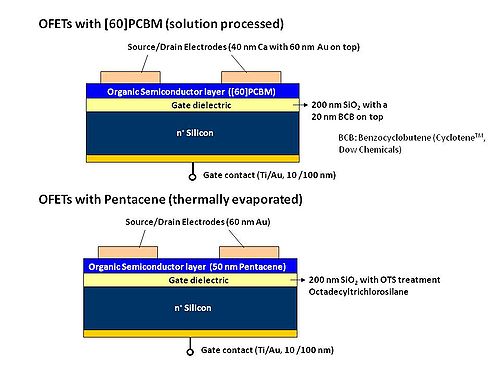Difference between revisions of "OFET fabrication and characterization"
Jump to navigation
Jump to search
Cmditradmin (talk | contribs) m (→Significance) |
Cmditradmin (talk | contribs) m (→Significance) |
||
| Line 4: | Line 4: | ||
===Significance=== | ===Significance=== | ||
All parts of an OFET can be made from plastics or thin flexible metals so that this could be used for flexible or printed electronics. | All parts of an OFET can be made from plastics or thin flexible metals so that this could be used for flexible or printed electronics. | ||
[[Image:OFET-2Device_structures.jpg|thumb| | [[Image:OFET-2Device_structures.jpg|thumb|500px|Solution processed and thermally evaporated OFET Device structures]] | ||
===Operation=== | ===Operation=== | ||
===Links=== | ===Links=== | ||
Revision as of 15:23, 13 April 2011
Background
The organic field effect transistor has a layered construction. A voltage applied to the gate causes the polymer layer to become a semiconductor and allows current flow between the source and drain contact.
Significance
All parts of an OFET can be made from plastics or thin flexible metals so that this could be used for flexible or printed electronics.
